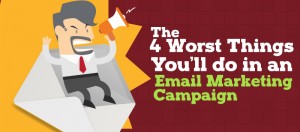Successful brands not only create engaging content, but they also measure the performance of that content. Columnist Jim Yu outlines four steps to help you balance the art and science of content marketing.
 Half of all B2B and B2C companies say they will increase their spending related to content marketing in the coming year. This growth means there will be even more content, more competition and higher standards for those who want to succeed.
Half of all B2B and B2C companies say they will increase their spending related to content marketing in the coming year. This growth means there will be even more content, more competition and higher standards for those who want to succeed.
From the consumer standpoint, the online content world has seen shifts in levels of interest and activity. For both desktop and mobile, it’s become increasingly clear that the key to succeeding in this competitive digital landscape is to have a precise understanding of what customers want to see and providing it for them.
Your content needs to resonate with the audience and drive them toward a call to action or conversion.
Balancing art and science
Successful content is driven by a careful balance between art and science. On the art side of the scale, you need to apply psychology and creativity to develop a story that engages people.
You’re focusing on how your content makes people feel and how well it motivates them. You need to think outside the box to have a better understanding of what people want to see.
On the science side, you need to measure your progress and results so that you can clearly see how well your content is performing and the direction you want to take moving forward. You’re thinking about strategy, lead generation and how well your content production aligns with other groups, like your sales team.
Art
As humans, we like to think that the decisions we make are based on facts and that we make purchases based on pure logic. However, psychology and emotions have a massive impact on purchasing behavior.
Companies that succeed in the art of content development understand how to tap into categories their customers identify with and create a story that resonates, engages and encourages action.
Brands can use a variety of subtle techniques to promote material, such as emphasizing limited quantities, a seller’s reputation or perks such as free shipping. Content must also take into account how people make decisions for a particular type of product.
For example, the sales cycle and the speed of the buyer’s journey will look much different for groceries than for houses or cars. Understanding how these factors come into play will impact the success of content.
Science
As technology continues to develop, brands have been able to monitor the success of their content and the behavior of their visitors with increasing accuracy and precision.
How brands measure depends on the goal for a particular piece of content. If the content is designed to help engage people from the search engines and entice them to explore the brand, for example, then you will be looking at traffic, bounce rates and the behavior of people after reading the page.
If a piece of content is more oriented toward driving people to convert, then you want to see your conversion rates and bounce rates.
You also should be examining a few other key statistics such as:
- your share of voice in the market for key topics of interest across the buyer’s journey;
- your content performance compared to the competition; and
- the authority of the piece — such as its rank and backlinks.

Successful content producers on the content battleground need to have a real understanding of who they are writing for and what they want to read. You need to be able to reach your target audience with engaging content, then optimize it for both discovery and purchase. Only then can you measure the results to see your progress and improve your targeting.
Below I’ve highlighted four key steps that you can take to help balance the art and science of content marketing.
1. Understand your target audience (Science)
You must understand and outline your target personas, so you know exactly who you’re trying to reach, their pain points and their motivations. You then need to describe their precise buyer journeys, so you know what these people want to see at each stage.
2. Create content that resonates with the target audience. (Art)
Once you have a keen understanding of precisely who your target audience is, you then need to work on creating content that connects with this group of people. Your content should provide answers for the audience, inspire them and be shareable. In other words, it should tell a compelling story.
The content should reflect an understanding of the motivations and desires of the audience. It should draw people in and engage them, so they start to build a relationship with your brand.
3. Optimize content, including images, videos and text, at the point of creation. (Art and Science)
Once you develop the content, you should be optimizing it before it goes live. This will maximize its visibility and ensure that it’s ready from the SERPs as soon as it’s published.
Optimization means using your targeted keywords in the titles, text, descriptions and alt tags to ensure that the search engines and the audience understand the relevance of your material to the subject at hand.
You also need to have a strong distribution plan to get the content in front of the targeted audience and encourage backlinks and engagement metrics. Create meta-descriptions and titles that encourage clicks.
4. Measure how successfully the content performs. (Science)
Before the content is published, you should know the role it was designed to play. This includes the persona it was designed for and the part of the buyer’s journey which it was written to serve.
Once you know the job of the content, you can then use metrics to see how well the material is achieving that aim and helping your brand reach its content goals.
The explosion of content has led to increased competition in the world of digital marketing and more emphasis on content that aligns with consumer intent.
Brands that want to succeed in this new content climate need to have the skills to carefully balance content production and performance — and they need to master the art of content creation and the science of measurement.
Some opinions expressed in this article may be those of a guest author and not necessarily Marketing Land. Staff authors are listed here.
Marketing Land – Internet Marketing News, Strategies & Tips
(132)
Report Post








